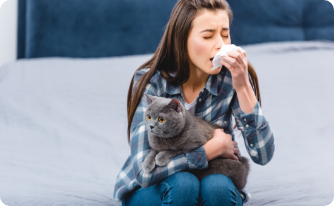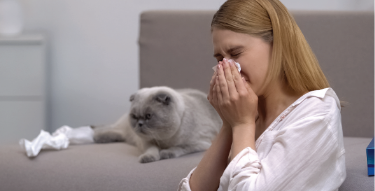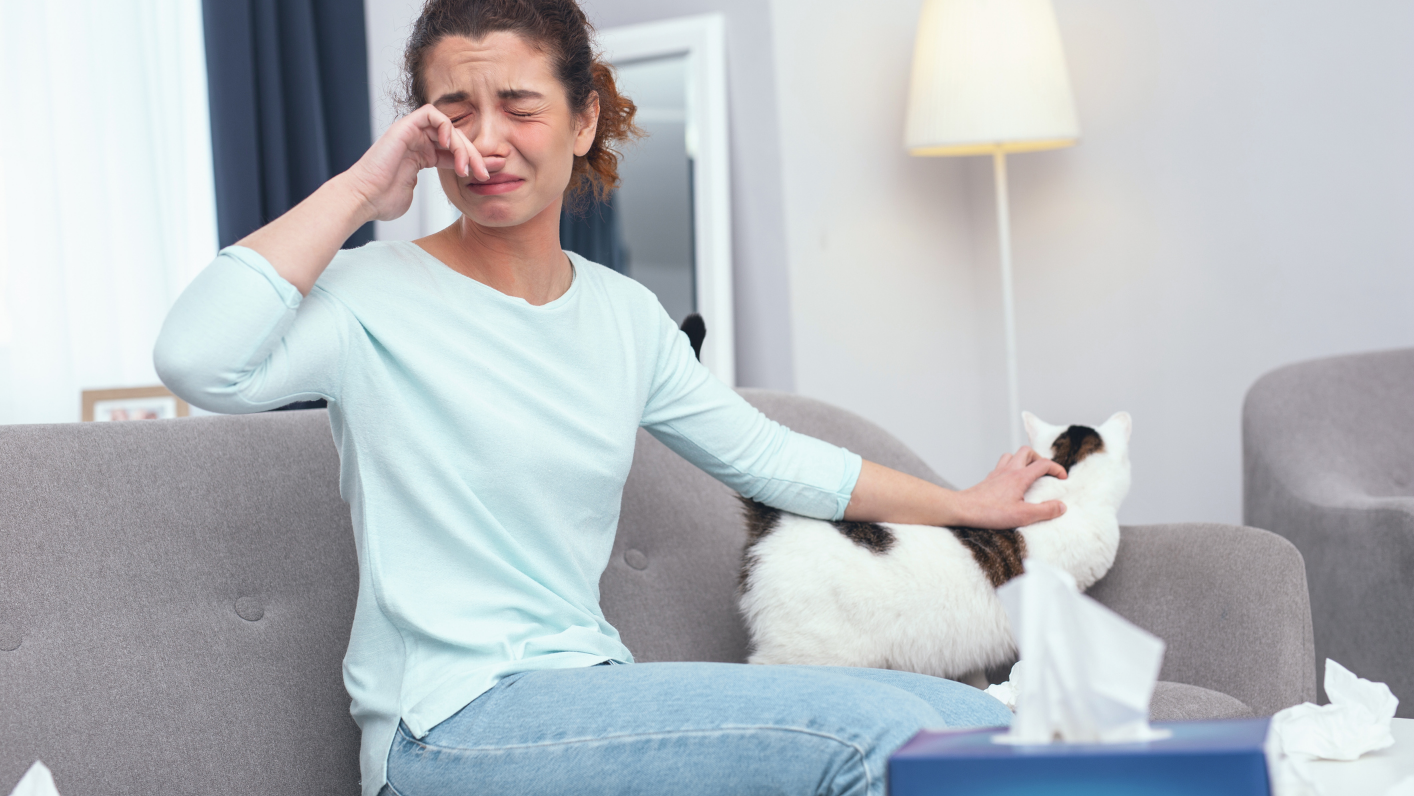Pet allergies are common in New Zealand, with cat allergies being the most common.1 Other common types of animal allergies include those to dogs, horses, cows, mice, rats, rabbits, guinea pigs, and birds. Allergies can affect those who work with animals such as farmers, vets, and zookeepers but also those who don’t have pets.2
How do cats and dogs cause allergies?
Pet hair, tiny skin particles and even a pet’s urine or saliva can cause an allergy. When any cat grooms themselves (long-haired and short-haired cats are the same), an allergen from their salivary or oil glands can be spread onto its fur.2 Dog allergies are less common than cat allergies. Like cats, allergen which cause dog allergies are also found in saliva. Dander, which sheds from skin, hair, and fur, can spread the dog allergen because it floats in the air unnoticed and is easily inhaled. All dog breeds cause allergies, however, some are called ‘hypoallergenic,’ which means they either create less dander or are low-shedding.1
What are the symptoms of pet allergy?3
Some of the most common symptoms of pet allergies are sneezing, runny, itchy nose, nasal congestion, itchy red or watery eyes, itch along the roof of the mouth or throat, postnasal drip and cough. Skin symptoms can include raised, red spots of skin (hives), and itchy skin.
Other symptoms may include facial pressure and pain, interrupted sleep, and swollen, blue-coloured skin under your eyes. In a child, frequent upward rubbing of the nose can also be a sign of pet allergy.
When to see a doctor?3
You should talk to your healthcare professional such as your pharmacist if you feel that your allergy symptoms bother you. If these symptoms affect your quality of life, such as sleeping, social activities, work performance, or if you have asthma or other respiratory conditions, speak to your doctor for a personalised diagnosis and treatment plan.
If the signs and symptoms are severe, such as rapidly worsening wheezing or shortness of breath, or severe breathing symptoms with minimal activity, seek emergency care.
What can be done to prevent pet allergies?4
Limit the exposure to pet allergens by keeping pets out of bedrooms and other places where people sleep, as well as off fabric furnishings. When grooming pets and cleaning, use a face mask and gloves. After going outside, clean the pet with pet-friendly wipes or towels to remove pollen.
Take a shower or change clothes if you can after spending time with your pets, touching their cage or bed. Alternatively wash your hands and face and try not to hug them. To remove as many pet allergens as possible from the home, use a microfilter vacuum bag and HEPA (high-efficiency particulate air) filters. Where possible replace or remove rugs and carpets that might trap pet allergens.
Related Articles

Learn more about which moulds are safe and hazardous. Explore what causes it to grow in your home and tips to try and eliminate it.
Know More
Could your best friend be causing your allergy symptoms to get worse? Read more on how you can reduce them.
Know More
In this article, we'll explore different options if you have a cat allergy but choose to live with a furry friend.
Know More-
References
- Allergy New Zealand. Animal/pet. Accessed on September 2022.
- European Centre for Allergy Research Foundation. Animal hair allergy. Updated July 2016. Accessed September 2022.
- Mayo Clinic. Pet allergy. Updated on August 2021. Accessed September 2022.
- Asthma and Allergy Foundation of America. Pet allergy: are you allergic to dogs, cats or other animals? Updated June 2022. Accessed September 2022.
Most Viewed Article
![]() This Section is horizontal scrollbar
This Section is horizontal scrollbar






